Are you noticing dark brown patches all over your lawn? If yes, chances are that there is a grub infestation around your home. These pests are quick spreaders and damage things around the house and the lawn that you likely spend a good time maintaining.
For those who aren’t aware, grubs are the larvae of various beetles often found underneath the surface of your grass. They typically feast on the roots of the grass, leading to the death and browning of the grass on the lawn.
As creepy as they look, you must know how to get rid of grubs in your lawn to protect the hard work you have put into sprucing up the place.
Table of Contents
What is Lawn Grubs?
Lawn grubs are the larval stage of various beetles, such as Japanese Beetles and June Bugs & are primarily found during the summer and springtime.
The larvae measure around one inch in length, have a C-shape, and typically burrow into lawns. As we mentioned, they feed on the grassroots, killing them in the process.
A few lawn grubs can be overlooked since they don’t cause irreparable damage, but things worsen when the infestation becomes beyond control.
What are the Signs of Lawn Grubs Infestation?
One of the telltale signs of lawn grubs is the brown patches that appear on the grass. Although browning can result from various factors, the most common is infestation of lawn grubs.
Also, another sign that you might have lawn grubs is the heightened number of rodents and burrowers in the garden, including skunks, raccoons, and even birds.
Soil testing is an effective way to check whether you have a lawn grub infestation. You aim to confirm the frequency of the infestation. For example, if the number of grubs is less than five, there’s not much to worry about. However, if the number is over 10, you must implement relevant measures to fix the issue.
List of Natural Ways to Eliminate Lawn Grubs
Eliminating lawn grubs from your area can be challenging, especially if the infestation has become beyond one’s control. Ideally, we’d recommend starting the grubs management with natural measures. So, let us take a look at them:
1. Drying the Lawn
This might sound controversial, and it is 100% risky, but it works surprisingly well. Grubs need a moist and warm lawn to thrive, so making the area inhabitable is the easiest way to eliminate them.
Now, the question is, “How does one dry the lawn entirely?” The easiest way would be to do this during the peak summer months when the rain chances are less. You must avoid watering the entire lawn area for 2-3 weeks straight. This will dry out the soil thoroughly, killing any remnant grubs.
However, there are risks that your grass might die in the process. But that’s a risk you must take to ensure things don’t go downhill.
2. Using Milky Spore
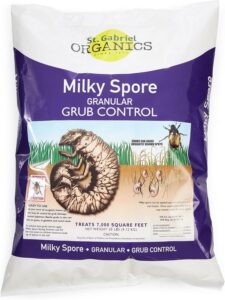
Another effective way to eliminate lawn grubs is by using a milky spore. This is a type of bacterium that effectively eliminates the Japanese beetle grubs from your lawn.
You can easily find it in the nearby stores in powdered form. All you need to do is sprinkle it across the grass, primarily focusing on the areas with maximum grub population.
However, you must understand that using a milky spore won’t show you immediate results. In some cases, it may take up to a year to show desirable results, which can be disappointing for some.
3. Using Beneficial Nematodes
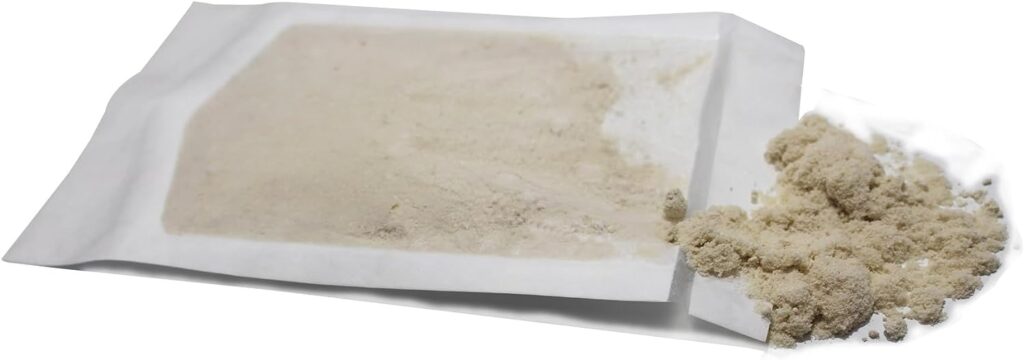
Parasitic worms have a terrible reputation, but you don’t realize that they can help in ways you didn’t know were possible. One of the most effective of the lot is using beneficial nematodes.
These microscopic parasitic worms invade the grubs and kill them in the process. However, like milky spores, this takes much time to show desirable results. When it comes to the application of nematodes, you have to water the lawn before and after sprinkling them for maximum benefit.
4. Encourage Birds in your Lawns

If you have been shooing birds away from your lawns, you must do the complete opposite now. You might not realize this, but birds are amazing predators for eliminating tiny pests like lawn grubs.
Small, brown birds are pretty common in your backyard, and while you might think they are damaging the turf or eating your fruits, they are likely feasting on the grubs in your lawn. Your work is to encourage their population on the lawn.
One of the most common types of birds that are known for ingesting grubs and killing them is House Wren. You can install birdhouses around the lawn, which should be enough to attract the birds and keep the lawn grub population in check.
5. Use Neem Oil
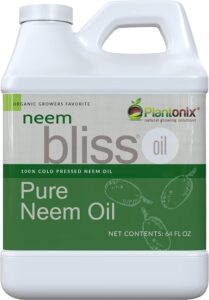
Neem oil is a natural & effective way to kill them proactively. It is loaded with insecticidal properties, which help kill the grubs infesting your lawn.
It will also prevent the grubs from laying eggs and arrest their growth and development. The easiest way to make a neem oil repellent is by mixing a combination of neem oil & water in a spray bottle.
Once done, you can spray the solution all across the lawn multiple times, which should keep a check on the lawn damage in the long run.
6. Aerate Your Lawn
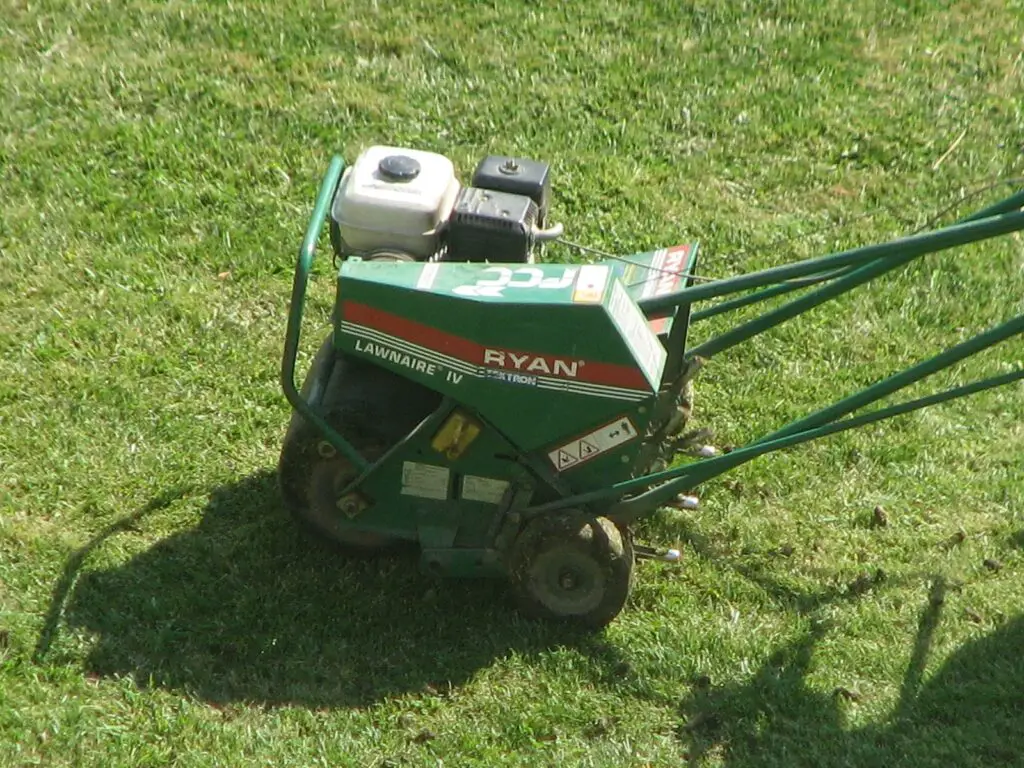
Dethatching is another effective way to eliminate the growth of lawn grubs. For those who aren’t aware, thatch is the dead plant matter that coats the upper layer of the soil.
What you need to do is dethatch the upper layer to be able to aerate the lawn. Not only does it improve the quality of the grass and augment its growth, but it also eliminates the shelter of the lawn grubs since you are eliminating the upper layer of dead soil and plant matter.
Also read: Does Liquid Lawn Aeration Work?
List of Chemical Ways to Eliminate Lawn Grubs
With the natural techniques out of the way, let us shift our focus toward the chemical ways. There are a few different ones that are not just effective but also show quick results.
1. Use Borax Grub Killer
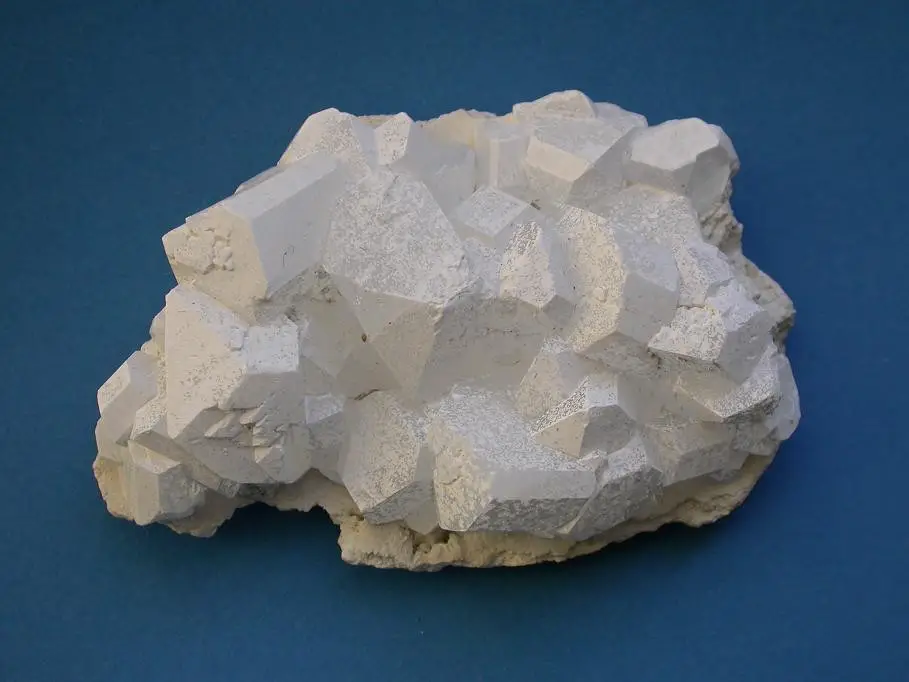
If you aren’t aware, using Sodium Tetraborate or Borax is quite an effective way to eliminate the lawn grubs likely eating away at your grass. However, using this chemical comes with some risks and downsides.
Since borax contains boron as an active element, it can often lead to permanent damage to the lawn. So, when using this solution for killing lawn grubs, we recommend using it in moderation.
2. Use Pesticides

If you don’t mind using chemical pesticides, lawn grub pesticides are available in the market. They mostly contain a blend of bifenthrin, imidacloprid, or carbaryl, which effectively kill lawn grubs.
Different types of chemical pesticides are available in the market and with different formulations. You can find them in granular or liquid form. You’d need to follow the package instructions for desirable results.
Besides the curative pesticides we mentioned, you can also use preventive pesticides. The preventive options are effective and perfect if you suspect the area will have a potential lawn grub infestation.
When using pesticides, the first step is picking the right pesticide. Firstly, you need to know the varieties; there are dry and liquid pesticides. Once you decide which pesticide you’ll use, the next step is to follow the spraying and application techniques mentioned on the packaging.
Irrespective of the type, ensure that you are thorough with the application. That’s what makes all the difference. You want to ensure that every part of the lawn is sprayed down optimally with the pesticides.
How to Prevent Lawn Grubs?
With how notorious lawn grubs are and the extent of damage they inflict, it isn’t surprising that people often look for effective preventive measures to keep the lawn grubs out.
Some of the effective preventive methods include:
- Maintain tall and healthy grass and a well-aerated lawn. This makes the soil and the grass inhabitable for the lawn grubs to lay eggs and develop.
- Always keep the lawn well-fed and flourishing so it does develop a layer of thatch on the top.
- If you have a habit of not mowing the lawn, that must also change. Ensure that you are regularly mowing the lawn.
- Avoid overwatering the lawn because the soil is highly habitable for the grubs to lay eggs and grow.
If you have been wondering how to eliminate grubs in your lawn, we hope this article gives you all the information you need. From signs of identification to natural and chemical modes of elimination, we have explained it in detail in this article. We’d recommend you stay alert and implement necessary measures before things take a turn for the worse.
Also read: 14 Natural Weed Killers to Kill Weeds Naturally in Your Garden
Frequently Asked Questions (FAQs)
What is the fastest way to get rid of grubs?
If you are looking for the fastest way to eliminate lawn grubs, chemical pesticides are your way to go. Using carbaryl or trichlorfon is the one that showcases the maximum benefit. However, you have to irrigate the lawn evenly after application.
What is the best time to treat grubs?
If you have lawn grub infestation or detect that you might, the best time to treat the lawn is during the late summer or early fall. Although the treatment window is short, it does yield great results.
Can neem oil kill grubs?
The natural insecticide property of neem oil effectively eliminates the lawn grubs from the entire lawn in no time.
What is a home remedy for grubs?
Besides neem oil, using a solution of dish soap, lemon juice, and mouthwash is also an effective way to eliminate the infiltration of lawn grubs in high quantities.
What is the safest way to get rid of grubs?
If you want to avoid using chemical routes, one of the most effective and safest ways to eliminate grubs is by introducing natural predators like nematodes.
How do you make homemade grub killer?
For quick results, the homemade neem oil solution effectively eliminates lawn grubs. What you need to do is mix neem oil with some water in a spray bottle. Spray that solution all across the lawn for the best results.
What causes grubs in the lawn?
If you have a heightened population of Japanese beetles and June bugs in your lawn, that’s potentially the main reason you have a heightened grub infestation.
What happens if you don’t treat grubs?
When your lawn is infested with grubs, you will notice areas of your turf becoming sparse and thin. Over time, these patches of damaged grass tend to expand in size. Grub damage indicates that the affected grass can be effortlessly pulled out from the soil along with its roots.
What month are grubs most active?
Lawn grubs are typically active between September and early October. So, that’s when you have to look for their infestation and eliminate those using effective measures.
How long do grubs stay?
Grubs typically survive in the soil for up to a year, after which they hibernate deep inside the soil and layer up during springtime.

